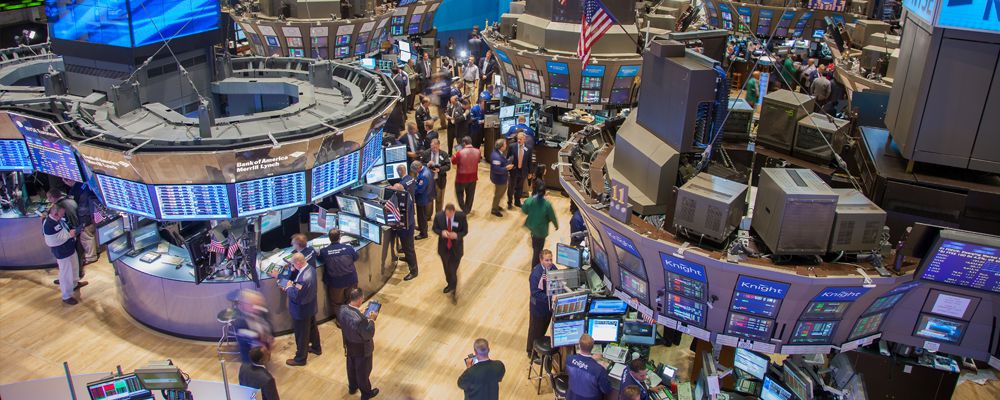Late cycle, but not end of cycle
- Monday, July 15, 2019
 There are ongoing concerns about the likelihood of a global recession due to the length of this bull run, slowing economic growth and high levels of global debt. However, looking forward there is cause for some cautious optimism.
There are ongoing concerns about the likelihood of a global recession due to the length of this bull run, slowing economic growth and high levels of global debt. However, looking forward there is cause for some cautious optimism.
The price of oil remains relatively cheap at US$63.29pb which is in part attributable to strong supply by OPEC, the USA and Russia but also due to some weaker demand. The enforcement of the Iranian oil sanction waivers has now come into force and therefore supply is expected to tighten potentially increasing oil prices. Oil has risen from US$50.47pb at Christmas to US$63.29 in early June. The trend post-waiver, is likely to be upwards with analysts suggesting no higher than US$80pb. If this is the case, then inflationary pressures from oil will be modest so allowing rising wages to be a growth factor for consumption.
We are hopeful that the USA and China will move closer towards a trade deal. While this may end up being less comprehensive than the Americans would want, the removal of heavy import tariffs will reduce costs, protect profit margins and contain inflation.A US-China trade deal may not be all good news for some regions such as Japan and Europe. Part of the original agreement involved greater purchases of US products by China at a level of US$1tn over the next 6 years. If China buys more products from the US it will hit purchases elsewhere. While a trade war may eventually ease, we expect the on-going technology war to continue with restrictions over market access and sanctions on Chinese companies.
Investors’ concerns have moved from the US-China trade wars to the slowing of growth. Given the slowdown in activity particularly in Europe and the recent inversion of the US yield curve, this is not surprising. A yield curve inversion has been a reliable predictor of recession in the past. The recent easing of monetary policy by the Fed has helped markets recover so far this year. There is now an expectation that the next rate change will be a reduction which will further support both the credit and equity markets. Growing demand from China as part of any future trade deal and lower interest rates could potentially help to avert any recession. We expect Donald Trump to put a lot more pressure on the Fed to stimulate the economy particularly in 2020, his election year.
In the near-term, growth in the American equity markets is expected, but looking further to the end of 2019 and into 2020, there remains a concern that growth will slow in the US as the Trump tax reforms start to fade. US corporate profit margins are expected to fall after a peak in Q3 2019 due to the rising costs of labour. It is possible that the US labour market will keep growing with even greater numbers in the work force. In May, the US employment rate was 60.6 % with 3.6% unemployed. This will add upward pressure on wage growth and inflation boosting the economy.
Trade across Asia fell in QI as Chinese manufacturers grappled with the impact of additional US tariffs on US$250 billion of Chinese imports. Chinese exports fell by 21% in February 2019 as compared to February 2018. However, the outlook for China is certainly improving following its stimulus package. Hopefully this improvement can push through to the whole global economy. The pickup in credit in China is not likely to feed through until the autumn.
The Eurozone faces perhaps the most uncertainty. In addition to reduced investment due Brexit, Italy’s financial issues and the current raise of populist parties, the slowing of growth has also hit exports and particularly German exports. To illustrate this, the German manufacturing confidence index, the Purchase Managers Index (PMI) has fallen in 14 out of 15 months to the end of March.
The economic data points to the global economy in ‘late cycle’ but not end of cycle. Investment managers are predicting that developed market GDP growth will slow from 2.2% in 2018 to 1.7% in 2019, which is a downgrade on previous forecasts while emerging markets are forecast to enjoy good but lower growth, falling from 5.1% in 2018 to 4.8% in 2019. Only India, Brazil and South Africa are expected to beat their 2018 figures.
The International Monetary Fund (IMF) chief economist Gita Gopinath feels the world is at a ‘delicate moment’ as there are many downside risks. The IMF are not predicting a global recession and in fact suggest that the world will grow by 3.3% in 2019 and 3.6% in 2020, but again these are downgrades on past predictions.
With a late cycle global economy, there are a number of risk factors: including further Federal Reserve policy errors, an economic slowdown, wage growth leading to higher inflation, excess corporate debt levels and a sovereign credit problem.
The new dovish policy of the major central banks will aid the conditions for the cycle to continue further, but this alone is insufficient to revive global growth. The overall picture suggests the global industrial slowdown is continuing. Markets are reasonably happy but nervous and investors need to understand this.

Chris Davies
Chartered Financial AdviserChris is a Chartered Independent Financial Adviser and leads the investment team.
About Estate Capital
Financial Services
Our Contacts
7 Uplands Crescent,
Swansea, South Wales,
SA2 0PA.
Tel: 01792 477763
